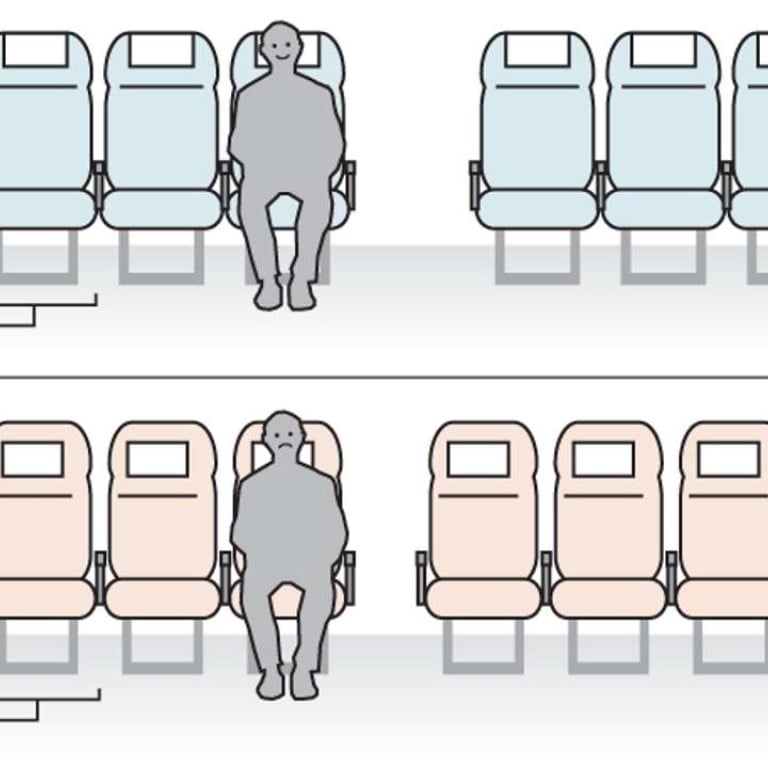
Hong Kong’s Cathay Pacific to introduce 10-abreast seating in its Boeing planes
Flight attendants union leader says move will be bad for customers and airline will need more staff working on planes
Cathay Pacific will move to the much disliked 10-abreast economy seating from the standard, spacious nine-abreast in plans revealed to the South China Morning Post by the airline’s chief executive.
The changes will be “bad” for passengers, says the airline’s cabin crew union under plans that will see an extra row of economy seats installed on its Boeing aircraft and the width of each seat reduced by up to 1.5 inches (3.8cm).
Chief executive Ivan Chu Kwok-leung said in an exclusive interview: “If you look at the Boeing 777s, which everybody uses from the Gulf to the US to European carriers and ourselves, the standard is 3-4-3. I think we are moving towards that stage, it’s very clear.”
A shortage of take-off and landing slots at Hong Kong International Airport means Cathay and local rivals like HK Express, are unable to expand the number of flights with the two runways operating at almost 100 per cent capacity every day.
“Slots are very scarce,” Chu said. “We want to generate more seats per slot, that’s the key thing. That’s why we are doing it. It’s very important we do it.”
An additional row of seats could add up to 35 more economy seats on regional aircraft and at least 17 more on long-haul flights, adding nearly 1.1 million extra seats per year to the 70 Boeings in the Cathay fleet. The move amounts to 4 per cent more seats a year.
On the Hong Kong-Vancouver route, Cathay’s Boeing 777 can carry up to 275 passengers, but Air Canada fits 458 passengers into the same model.

Chu explained he wanted to offer the best in economy seats to ensure customers felt comfortable in the smaller seats. Cathay said it was committed to maintaining 32 inches of legroom as standard but the seat width would narrow – estimated to come down from 18.5 inches to around 17 inches per seat, based on changes made by rival airlines.
The industry has looked at 10-abreast holdouts like Cathay and Singapore Airlines and wondered if they are delusional
The Cathay chief said he was confident he could maximise the cabin real estate to ease the “pain” associated with travelling in a full long-haul economy-class flight through the latest seat and cushion technology.
“We will maximise every single centimetre; every single millimetre counts,” Chu pledged.
Cathay Pacific has not set out a clear timeline for the changes to economy class seating but it is understood to happen around 2018.
Flight attendant Silvia But, vice-chairwoman of the airline’s Flight Attendants Union, said: “If there is one more seat per row, I cannot imagine how narrow it will be. For passengers it’s definitely bad news.”
The union member called for the airline to increase the number of cabin crew to serve a higher number of passengers.
Will Horton, a Hong Kong-based analyst for CAPA Centre for Aviation, said: “Cathay has been disadvantaged by not doing [10-abreast]. The industry has looked at 10-abreast holdouts like Cathay and Singapore Airlines and wondered if they are delusional.
“There are not enough passengers willing to pay a premium for Cathay. The passengers willing to pay more for nine-abreast either aren’t willing to pay enough or are not numerous enough,” he said.

